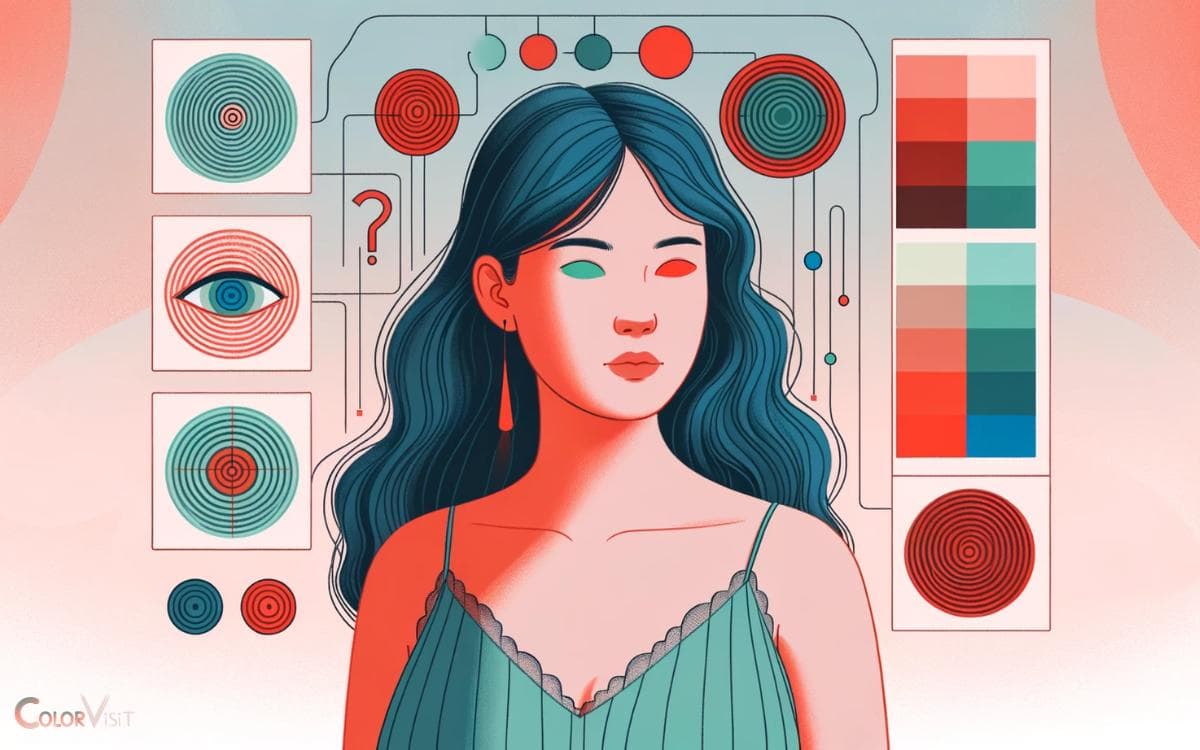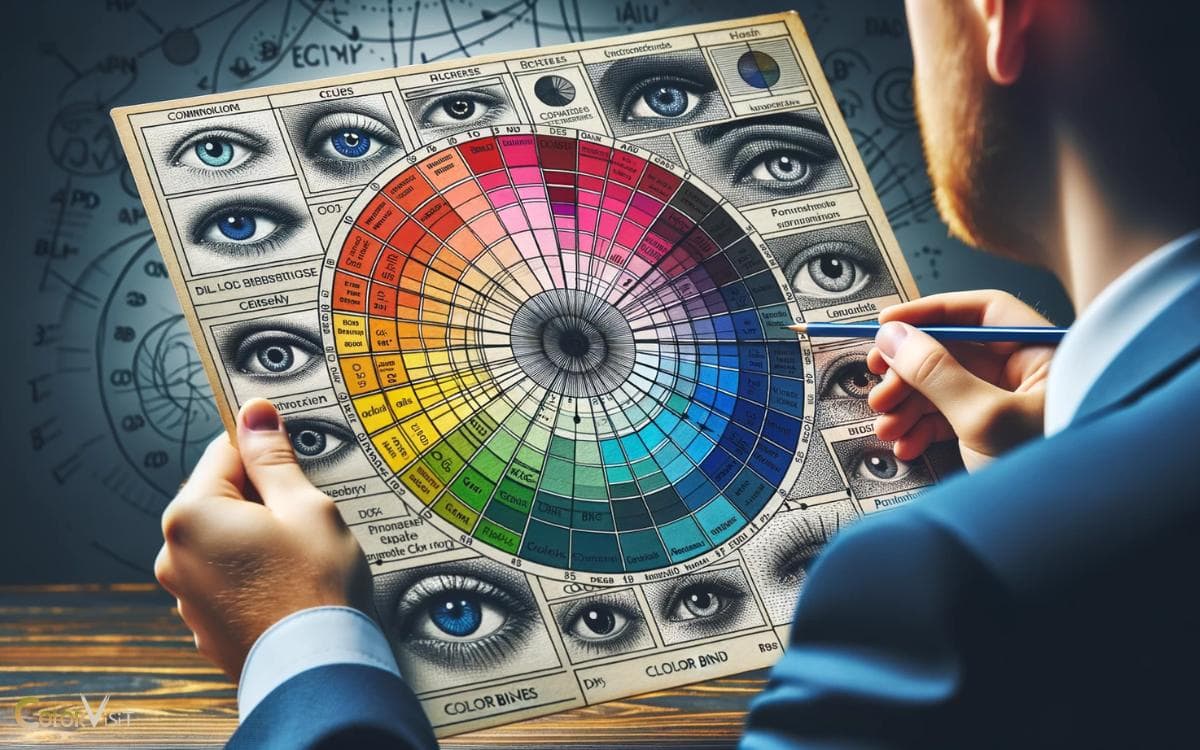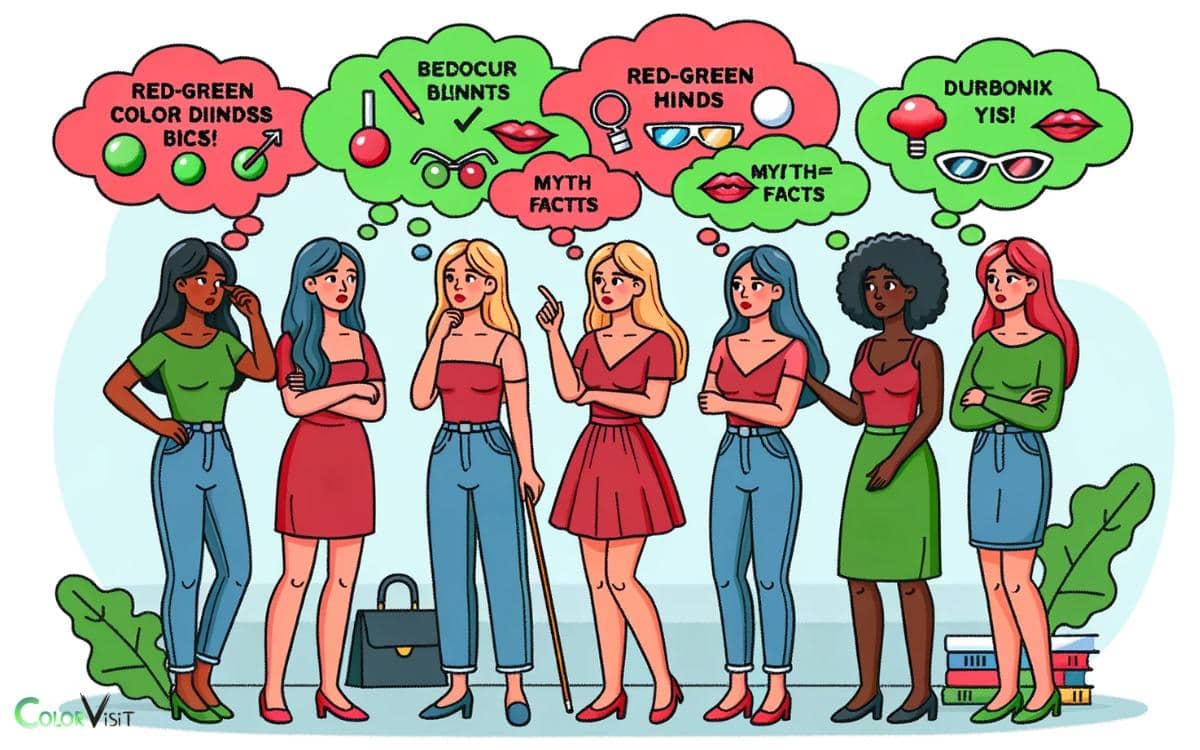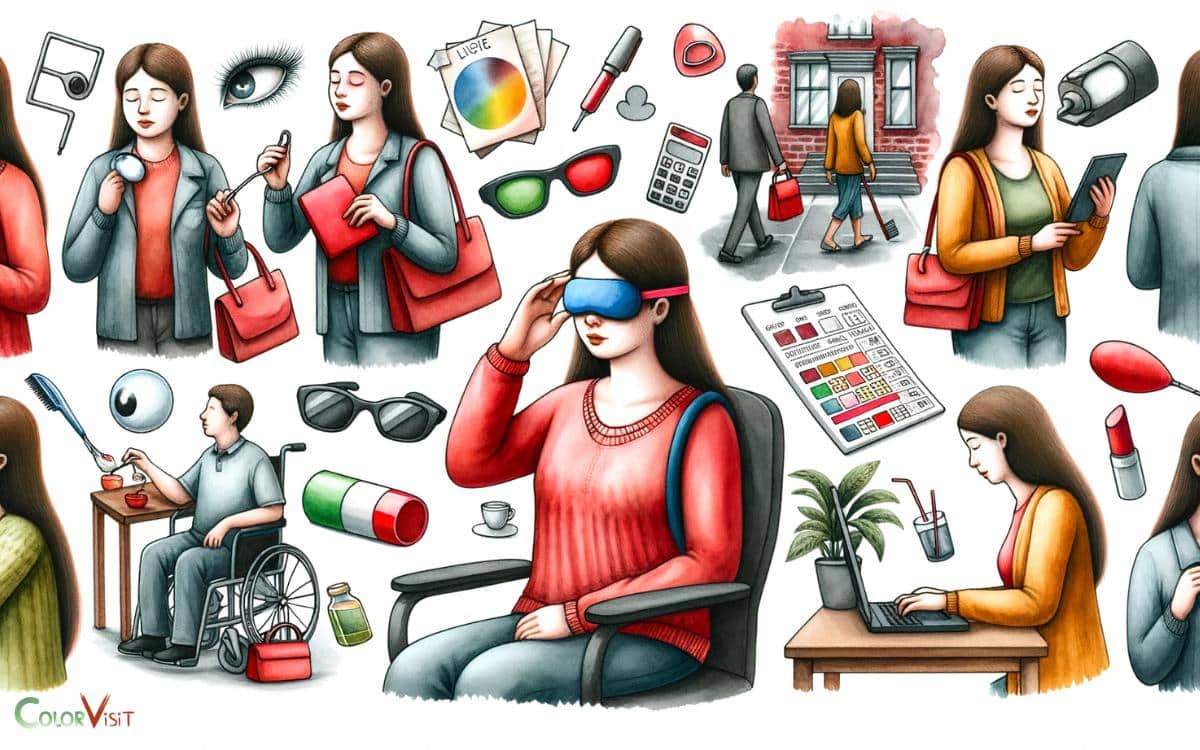Can a Female Have Red-Green Color Blindness? Yes!
Yes, a female can have red-green color blindness. However, it is less common in females than in males.
Color blindness, also known as color vision deficiency, is a vision impairment that affects both males and females.
While it is true that males are more likely to be affected by color blindness due to it being an inherited condition carried on the X chromosome, females can also have red-green color blindness.
Overall, understanding the basics of color blindness is crucial in order to debunk myths surrounding the condition.
Key Takeaway
Understanding The Basics Of Color Blindness
Color blindness is a condition that affects an individual’s ability to perceive or differentiate between certain colors.
Types Of Color Blindness
There are different types of color blindness, with the most common form being red-green color blindness.
- Red-green color blindness can further be classified into two main subtypes: protanopia and deuteranopia.
- Protanopia is the absence of the red cone cells, making it difficult to distinguish between red and green.
- Deuteranopia, on the other hand, is the absence of the green cone cells, resulting in a similar difficulty in perceiving these colors.
There is also a rare form of color blindness called blue-yellow color blindness or tritanopia. This condition affects an individual’s ability to distinguish between shades of blue and yellow.
Prevalence Of Color Blindness
Color blindness affects a significant number of individuals around the world.
- According to studies, approximately 1 in 12 men and 1 in 200 women are color blind to some extent.
- Given that red-green color blindness is the most common form, it is no surprise that both males and females can have this type of color vision deficiency.
- It is worth noting that the severity of color blindness can vary among individuals.
- While some may have a mild deficiency and only struggle in certain situations, others may have a more severe form and struggle with daily tasks that rely on accurately perceiving colors, such as reading charts or recognizing traffic lights.
Genetic Inheritance Of Color Blindness
In terms of genetic inheritance, it is possible for a female to have red-green color blindness due to the way the condition is passed down through genes.
How Is Color Blindness Inherited?
Color blindness is a genetic condition that affects a person’s ability to see and distinguish certain colors.
While many people are familiar with the idea that color blindness is more common in males, understanding the genetic inheritance of color blindness can shed light on why this is the case.
Role Of Genes In Determining Color Blindness
Genetic factors play a significant role in determining whether an individual will have color blindness.
- The genes responsible for color vision are located on the X chromosome, one of the two sex chromosomes that determine an individual’s gender.
- These genes code for the production of proteins called photopigments, which are essential for normal color vision.
- Mutations or abnormalities in these genes can lead to different types of color blindness, such as red-green color blindness.
Differences In Color Blindness Inheritance Between Males And Females
| Differences | Males | Females |
|---|---|---|
| Number of X Chromosomes | One X chromosome | Two X chromosomes |
| Presence of Y Chromosome | One Y chromosome | One Y chromosome |
| Inheritance of Color Blindness Gene | If one X chromosome carries the gene, there’s a high chance of being color blind | Need to inherit the gene on both X chromosomes to be color blind |
| Frequency of Color Blindness | More common in males | Less common in females |
| Carriers of Color Blindness | Rarely carriers (either affected or not) | Can be carriers without experiencing color blindness |
| Passing on the Gene | Pass the gene to all sons (who will be affected if they inherit the X with the gene) | Can pass the gene to both sons and daughters (sons may be affected, daughters may be carriers) |
Red-green Color Blindness Explained
Welcome to this informative blog post on red-green color blindness. In this section, we’ll explore the overview, causes, and symptoms of red-green color blindness.
Whether you’re someone who has this condition or you’re simply curious about it, this article aims to provide you with a comprehensive understanding.
Red-green Color Blindness Overview
Red-green color blindness, also known as deuteranomaly, is a type of color vision deficiency that affects a significant number of individuals.
It is more common in males, but there are cases where females can also have this condition. This color deficiency impairs the perception of certain colors, particularly shades of red and green.
Causes Of Red-green Color Blindness
- The primary cause of red-green color blindness is a genetic mutation or abnormality that affects the photoreceptor cells in the eyes responsible for detecting different colors.
- Specifically, it affects the green and red cones, which are responsible for perceiving green and red light wavelengths, respectively.
- This genetic mutation is often hereditary, meaning it can be passed down from parents to their children.
- However, it’s important to note that red-green color blindness can also be acquired later in life due to certain medical conditions or as a side effect of specific medications.
Symptoms And Signs Of Red-green Color Blindness
The most apparent symptom of red-green color blindness is difficulty distinguishing between certain shades of red and green.
- Individuals with this condition may have trouble recognizing when colors are supposed to appear different to someone with normal color vision.
- They may confuse red and green traffic lights or struggle to differentiate between certain colored objects.
- It’s important to note that the severity of symptoms can vary among individuals with red-green color blindness.
- While some individuals may have a mild form of the condition and only experience minor difficulties in color perception, others may have a more severe form, which can significantly impact their daily lives.
Here’s a table summarizing the key points about red-green color blindness:
| Overview | Causes | Symptoms |
|---|---|---|
| Affects perception of red and green | Genetic mutations or abnormalities | Difficulty distinguishing between shades of red and green |
| More common in males | Hereditary or acquired | Trouble recognizing certain colored objects |
Red-green color blindness is a condition that can impact the way individuals perceive certain colors, particularly shades of red and green.
Misconceptions About Red-green Color Blindness In Females
When it comes to color blindness, the common perception is that it only affects males. However, the truth is that females can also have red-green color blindness, albeit at a lower frequency than males.
This misconception has led to various stereotypes and misunderstandings about female color blindness, which can be both frustrating and isolating for those who are affected.
Common Misconceptions And Stereotypes
There are several misconceptions surrounding red-green color blindness in females that need to be addressed.
- It is often believed that only males can inherit this condition, completely disregarding the possibility of females being color blind.
- This misconception arises from the fact that the gene responsible for red-green color blindness is recessive and carried on the X chromosome.
- Males have only one X chromosome, so if it carries the gene, they will develop color blindness.
- On the other hand, females have two X chromosomes, making it less likely for both to carry the gene and result in color blindness.
- However, there is still a chance for females to inherit the gene from one parent and develop color blindness, although at a lower rate, around 1 in 200 compared to 1 in 12 for males.
Another common stereotype is that females with red-green color blindness cannot appreciate or have an interest in visual arts.
Challenges Faced By Females With Red-green Color Blindness
Despite these misconceptions, females with red-green color blindness face challenges in various aspects of their lives.
- One major challenge is in the educational system, where traditional teaching materials heavily rely on color-coding and charts that assume normal color vision.
- This can make it challenging for color-blind females to fully understand and engage with the material.
- Occupations that require color differentiation, such as graphic design or certain medical fields, may pose challenges for females with red-green color blindness.
- Females with red-green color blindness also face societal challenges, especially when it comes to fashion choices.
- The fashion industry often relies on color coordination for clothing, and color-blind individuals may struggle with matching colors appropriately.
This can lead to feelings of self-doubt and frustration when it comes to personal style and presentation.
Can Age Spots Affect Color Perception in Females with Red-Green Color Blindness?
Age spots in red color may have a potential impact on color perception for females with red-green color blindness. The presence of these age spots might further hinder the differentiation of colors in the red spectrum. Individuals with red-green color blindness already struggle with distinguishing certain colors, and the addition of age spots in red may heighten this challenge. Further research is needed to understand the extent of this interaction.
Living With Red-green Color Blindness As A Female
While less common in females, it is estimated that approximately 1 in 200 women experience some degree of red-green color blindness.
Living with red-green color blindness as a female can bring about a unique set of challenges in daily life, education, careers, and relationships.
Daily Life Challenges And Adaptations
Living with red-green color blindness as a female can present various challenges in daily life. While it may not directly impact overall health or life expectancy, it does affect the way colors are perceived.
Females with red-green color blindness often experience difficulties in distinguishing between shades of red and green, and the world may appear less vibrant or blurry.
Here are some common challenges faced by females with red-green color blindness:
- Difficulty in accurately identifying traffic lights
- Challenges in matching clothing or coordinating color schemes
- Trouble differentiating between ripe and unripe fruits or vegetables
- Issues with reading color-coded charts or diagrams
However, it’s important to note that individuals with red-green color blindness often develop various adaptations to overcome these challenges.
Impact On Education, Careers, And Relationships
Red-green color blindness can also have an impact on educational pursuits, careers, and relationships for females.
- In educational settings, it may affect how certain subjects are understood or interpreted. For instance, topics that heavily rely on color coding, such as maps or biology diagrams, may pose challenges.
- Art-related activities or subjects that involve color theory may require alternative approaches or additional support.
- When it comes to careers, certain professions that involve color differentiation or color-based tasks may be more challenging for females with red-green color blindness.
- These careers can include graphic design, cosmetology, or scientific fields where the ability to accurately distinguish colors is crucial.
- However, with the increasing awareness and supportive measures being implemented, it is becoming easier for females with red-green color blindness to pursue their desired careers.
Red-green color blindness can also impact relationships, particularly in social situations where color identification and appreciation are expected.
Conclusion
It is possible for females to have red-green color blindness, although it is more common in males.
This condition can impact one’s ability to perceive these colors accurately, leading to difficulties in various aspects of daily life.
Understanding the early signs and seeking professional help is crucial for managing this condition and finding ways to adapt and navigate the world with red-green color blindness.
Overall, raising awareness and promoting inclusivity can contribute to a more understanding and accommodating society for individuals with color vision deficiencies.






